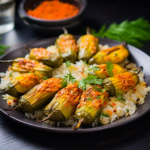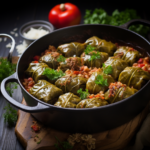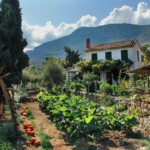Unveiling the Essence of Rosemary in Greek Cuisine: Cultivation, Drying, and Culinary Delights
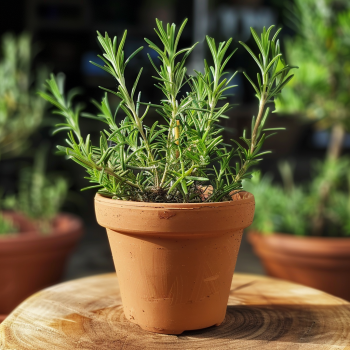
In the rich tapestry of Greek cuisine, few herbs are as revered and cherished as this. With its robust flavor, aromatic fragrance, and versatility, it plays a prominent role in traditional Greek dishes, imparting depth and character to culinary creations. Beyond its culinary applications, it holds significance in Greek culture and folklore, symbolizing remembrance, love, and prosperity. In this comprehensive guide, we delve into the essence of it in Greek cuisine, exploring its cultivation, drying methods, and culinary delights.
Cultivation of Rosemary:
To embark on a journey with us, one must first understand its cultivation process. Known for its resilience and adaptability, it thrives in Mediterranean climates, making it well-suited for cultivation in Greece. When planting rosemary, select a sunny location with well-drained soil, as this herb flourishes in full sunlight and prefers soil that is not overly moist. Begin by preparing the soil, ensuring good drainage to prevent waterlogging, and incorporate organic matter to promote healthy growth.
When propagating rosemary, consider starting from seeds or cuttings, both of which yield successful results. Seeds can be sown directly into the soil after the last frost, while cuttings from established plants can be rooted in water or soil to create new plants. Whether starting from seeds or cuttings, ensure adequate spacing between plants to allow for proper airflow and growth.
Drying Rosemary: Once your plants have matured and produced an abundance of fragrant foliage, it’s time to harvest and dry this aromatic herb for culinary use. Harvest rosemary sprigs in the morning when essential oils are at their peak concentration, using sharp scissors or pruning shears to cut the stems just above a leaf node. Avoid harvesting more than one-third of the plant at a time to promote continued growth and vitality.
To dry rosemary, begin by removing any damaged or discolored leaves and rinsing the sprigs under cool water to remove any debris. Pat the sprigs dry with a clean towel and then gather them into small bunches, securing the stems with twine or rubber bands. Hang the bundles upside down in a warm, dry location with good air circulation, such as a kitchen or pantry.
Culinary Delights with Rosemary:
In Greek cuisine, rosemary adds depth and flavor to an array of dishes, from roasted meats and vegetables to savory breads and sauces. One classic Greek dish that showcases the versatility of rosemary is lamb souvlaki, skewered and grilled to perfection with aromatic herbs and spices, including rosemary, garlic, and oregano. Another beloved Greek delicacy is lemon-rosemary roasted potatoes, featuring tender potatoes infused with the citrusy zest of lemon and the earthy aroma of rosemary.
Beyond savory dishes, it lends its distinctive flavor to sweet treats such as honey and baklava, a decadent dessert layered with phyllo pastry, nuts, and a drizzle of fragrant honey infused with rosemary. Whether used fresh or dried, it elevates the culinary experience with its aromatic presence and robust flavor profile.
Conclusion:
In the culinary landscape of Greek cuisine, rosemary stands as a symbol of tradition, flavor, and culinary excellence. From its humble beginnings in the sun-drenched hillsides of Greece to its revered status on dinner tables around the world, it continues to captivate and inspire with its timeless appeal. Whether cultivating it in your herb garden, drying it for future use, or incorporating it into your favorite Greek recipes, the essence of it enriches the culinary journey with its aromatic charm and undeniable allure.
FAQ: Exploring the Essence of Rosemary
1. What is rosemary good for?
Rosemary is renowned for its myriad health benefits and culinary versatility. Rich in antioxidants and anti-inflammatory compounds, it is believed to support cognitive function, improve digestion, and boost immune health. Additionally, it has antimicrobial properties that may help ward off infections and promote overall well-being. In culinary applications, it adds depth and flavor to a wide range of dishes, from savory meats and vegetables to sweet desserts and baked goods.
2. What does rosemary taste like?
Rosemary boasts a distinctive flavor profile characterized by its piney, woody aroma and robust, slightly peppery taste. Its flavor is reminiscent of the Mediterranean landscape, with hints of earthiness and citrusy undertones. When used fresh, it lends a bright, aromatic quality to dishes, while dried it imparts a more concentrated flavor. Whether used as a seasoning for meats, vegetables, or breads, it adds depth and complexity to culinary creations with its unique taste and aroma.
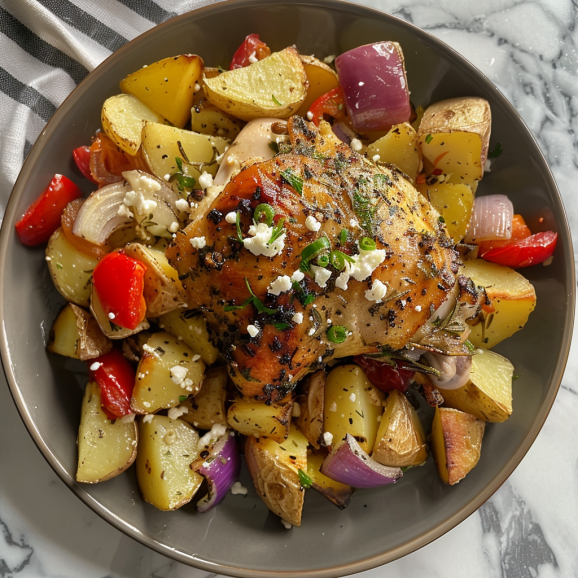
3. Why is rosemary good for cooking?
Rosemary is prized in culinary circles for its ability to enhance the flavor of dishes while imparting a delightful aroma. Its aromatic oils contain compounds that add depth and complexity to savory and sweet recipes alike, making it a versatile herb for cooking. it pairs exceptionally well with a variety of ingredients, including meats, poultry, fish, potatoes, and vegetables, elevating the taste profile of dishes with its distinctive flavor. Whether used fresh or dried, itinfuses dishes with a Mediterranean flair that delights the senses and enhances the overall dining experience.
4. How do you eat rosemary?
There are countless ways to enjoy the culinary delights of rosemary. Fresh rosemary sprigs can be used to infuse flavor into marinades, sauces, and dressings, or added directly to dishes as a garnish. When cooking with it, simply strip the leaves from the stems and chop or mince them finely before incorporating them into recipes. it is particularly well-suited for seasoning roasted meats, poultry, and vegetables, as well as for flavoring soups, stews, and sauces. For a refreshing twist, try steeping fresh rosemary sprigs in hot water to make fragrant rosemary tea, or infusing olive oil with rosemary for a flavorful dip or dressing. Whether used fresh or dried, it lends its aromatic charm to a wide range of culinary creations, adding depth and complexity to every bite.
Honey Garlic Chicken
Discover a delightful blend of sweet and savory in this easy-to-make Honey Garlic Chicken recipe. Perfect for weeknight dinners or special occasions, this dish features tender chicken glazed with a rich honey garlic sauce. Serve it with a side of steamed vegetables or rice for a complete meal.
Honey Chicken Glazed
This recipe offers a perfect balance of sweet honey glaze and savory chicken. The dish is simple yet flavorful, making it ideal for busy weeknights or a casual dinner with friends. Pair it with a fresh Greek salad or roasted potatoes to enhance your meal.
Chicken Gyro Marinade
Learn how to make a flavorful marinade for traditional Greek chicken gyros. This marinade, featuring Greek yogurt, lemon juice, garlic, and herbs, ensures that the chicken is tender and full of authentic Greek flavors. Perfect for grilling or baking, these gyros are sure to be a hit at any gathering.
Greek Chicken and Potatoes
A classic Greek dish combining roasted chicken and potatoes with lemon and herbs. This hearty meal is easy to prepare and packed with flavor, making it a favorite for family dinners. Serve it with a side of tzatziki and warm pita bread for a complete Greek experience.
Greek Chicken Marinade
A versatile marinade perfect for grilling, baking, or frying chicken. Made with olive oil, lemon juice, garlic, and a mix of herbs, this marinade infuses the chicken with vibrant Greek flavors. Ideal for a variety of dishes, from salads to main courses.
Celebrity Chefs on Chef on a Bike YouTube
Greek TV Chef Anna-Maria Barouh
Facebook: Anna-Maria Barouh
Instagram: annamariabarouh
- Celebrity Chef, Food Stylist, Recipe Developer Anna Maria Barouh is our guest on Chef on a Bike. Anna-Maria is a regular on Greek Television and has a very popular food blog and is a magazine contributor.












